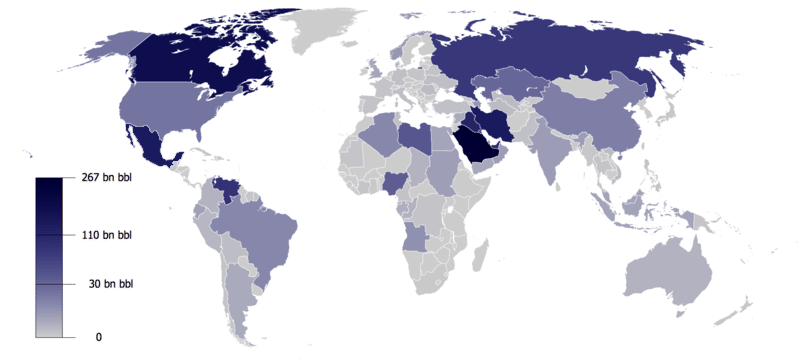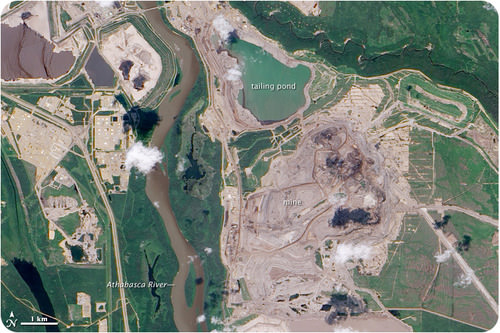
How much is left?
The answer to that question depends on what we as a society are willing to do to get fossil fuels. How much are we willing to damage the environment to extract and transport fossil fuels? How much are we willing to raise atmospheric greenhouse gas levels and further alter climate? The Keystone Pipeline would bring crude oil from tar sands to the U.S., but for the time being, that project is on hold.
Fossil Fuel Reserves
Fossil fuels provide about 85% of the world’s energyat this time. Worldwide fossil fuel usage has increased many times over in the past half century (coal – 2.6x, oil – 8x, natural gas – 14x) because of population increases, because of increases in the number of cars, televisions, and other fuel-consuming uses in the developed world, and because of lifestyle improvements in the developing world.

Worldwide oil reserves.
The amount of fossil fuels that remain untapped is unknown, but can likely be measured in decades for oil and natural gas and in a few centuries for coal (Figure above).
Alternative Fossil Fuels
As the easy-to-reach fossil fuel sources are depleted, alternative sources of fossil fuels are increasingly being exploited (Figure below). These include oil shale and tar sands. Oil shale is rock that contains dispersed oil that has not collected in reservoirs. To extract the oil from the shale requires enormous amounts of hot water. Tar sands are rocky materials mixed with very thick oil. The tar is too thick to pump and so tar sands are strip-mined. Hot water and caustic soda are used to separate the oil from the rock.

A satellite image of an oil-sands mine in Canada.
The environmental consequences of mining these fuels, and of fossil fuel use in general, along with the fact that these fuels do not have a limitless supply, are prompting the development of alternative energysources in some regions.
Summary
Easy to get at fossil fuels are running out, but there are other sources that are harder to get at that are still available.
Oil shales and tar sands are two of the alternative sources of fossil fuels that are much in the news.
The need for fossil fuels continues to grow as people in the developed world use more and more people in the developing world want them.

No comments:
Post a Comment